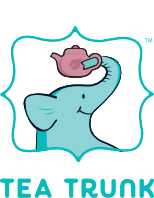
We look at them in gardens, on sidewalks, on instagram feeds, in vases and when they wither away we even include them in our compost instead of throwing them away to make use of their complete potential. But what if there was another way to include flowers in our daily lives?
With their gorgeous colours and fragrant aromas it can be easy to think that they look good enough to eat, and indeed they are! Before venturing into the world of edible flowers there are 2 rules that are meant to be followed; firstly, only eat flowers that are grown and meant for human consumption free from pesticides and other chemicals and secondly, only eat the petals of the flower and not the stem and stamens. Read on to find out more about the 5 most beneficial flowers for your health.

Nasturtium: The delicate nasturtium blossoms are commonly used by cooks to pretty up salads and dishes. Bakers have used them to decorate cakes. Throughout history, nasturtium flowers have been considered a herb and a vegetable. The leaves are rich in vitamin C and also contain a sulphur compound that has antibacterial properties. They also are a natural antibiotic. Eating a couple of the peppery leaves at the onset of a cold can stop it dead in its tracks. The gentle antibiotic reaction makes it ideal for treating minor colds and flu.
Marigolds: Popularly known as Genda Phool in India, the flower is used topically to heal wounds. It is also said to be high on the pigment lutein, also known as eye vitamin, which is necessary to keep eye diseases at bay. Ranging from vibrant orange to cheerful yellow, calendula flowers look pretty in vases but they have also been made into topical oils and creams to treat burned skin and wounds. A study done with cancer patients undergoing radiation therapy has concluded that calendula ointment proved superior to prescription products for preventing radiation burns. These beautifully bright flowers taste similar to saffron, and are good in pasta and rice dishes. Bright yellow calendulas are an economical alternative to expensive saffron, although not quite as pungent.

Rose: Aromatic Roses are quite possibly the most popular edible flower. They are said to contain phenolics, which are believed to have anti-inflammatory properties. Said to be a rich source of vitamins, it is believed to reduce the risk of heart diseases, cancers and diabetes. Roses are also well known for their cooling properties and can help with diabetes and heart disease. As a Gulkhand consuming country we are no strangers to the sweet subtle aroma and taste of roses. They go very well in cake and desert recipes. Rose hips (the base of the flower) have been used to combat indigestion, constipation, urinary problems, and even arthritis. The petals of the flowers are also rich in vitamins and antioxidants. Teas brewed with rose petals have been known to relieve stress and tension headaches.
Chamomile: Known for its calming effects, chamomile is often had in tea. It is supremely effective in combating insomnia. It is believed to have anti-inflammatory, anti-carcinogenic and wound healing properties. The flowers can be eaten raw, or you can dry them to be used later for brewing tea. Chamomile is also said to be able to soothe a bloated stomach, as well as combat other stomach ailments like indigestion.
Violets: Violet leaves and flowers are loaded with minerals and vitamins, especially A and C. The leaves are tasty both raw and cooked, with a neutral versatile flavour. They can be sprinkled onto fresh salads for a vitamin boost. The flowers are sweet and tangy, and make a gorgeous garnish on salads and desserts. Medicinally, violet is a gentle but potent remedy. It is a blood purifier and stimulates the lymphatic glands, helping the body get rid of bacteria and other toxins. Soothing and cooling, it helps reduce fever and inflammation. Their vibrant colour also makes for a very eye catching salad garnish.
Flowers in tea or food have several health benefits. They are a rich source of vitamins, including folic acid, riboflavin, and niacin. Flowers, especially those with deeper colours, are very high in antioxidants. They also contain Vitamins A, C and E. Some even have Vitamin D, others contain beta-carotene and some have pollen in them that when eaten, can lessen allergy attacks. Some are sweet, some bitter, and some are salty. All of them have some fibre to them.
So the next time you buy a bunch of fresh flowers for your vase take a second to think about whether you can include them in your plate as well.
A great and easy way to enjoy the health benefits of flowers is to add them to your tea! Find a selection of our best floral teas here.


